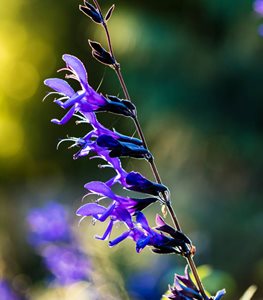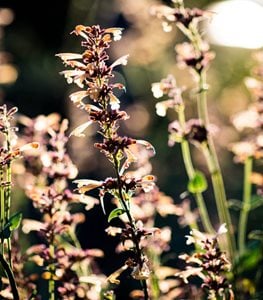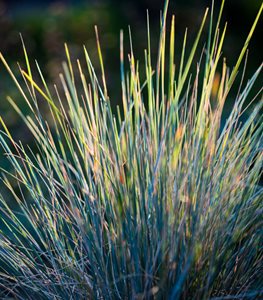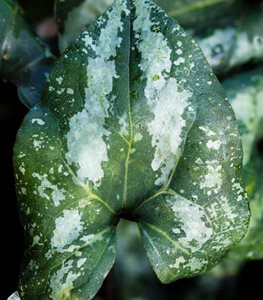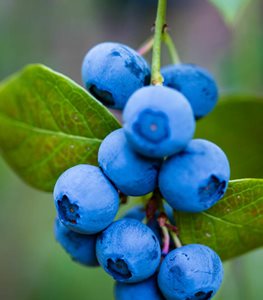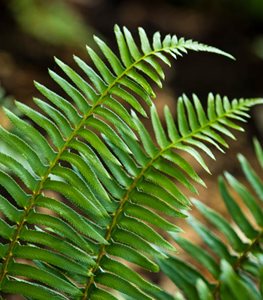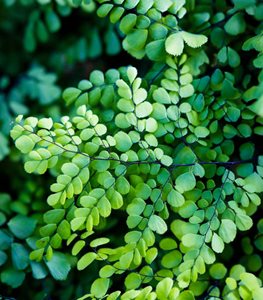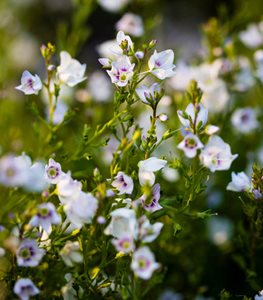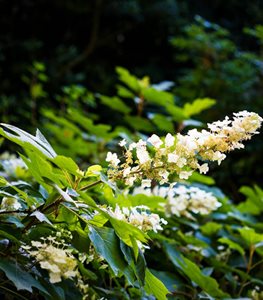Pacific Northwest Plants for a Natural-Looking Garden
A design-build firm recommends their favorite plants for a garden that blends into its surroundings.Rebeeca Sams and Buell Steelman of the design-build firm Mosaic Gardens (located in the Pacific Northwest) favor compact plants with a meadowy texture and colors that blend well with others in order to create natural-looking gardens that don’t overwhelm smaller suburban lots. Here are some of their recommendations.
Salvia guaranitica ‘Black and Blue’
This salvia produces indigo flowers with nearly black calyces on upright stems all season. “It’s almost scary to walk through a mass of it,” Sams says, “because amped-up hummingbirds want those flowers.” Western Oregon’s cool, damp climate sometimes makes overwintering a challenge, but plants can resprout from tubers or be grown as annuals.
Agastache ‘Summer Glow’
‘Summer Glow’ has luminescent apricot-colored flowers on long stems that attract pollinators and catch the light. “It has a rough, meadowy feeling,” Sams says, “and doesn’t look like one of those plants that’s been bred to death.” Marginally winter-hardy in western Oregon.
Helictotrichon sempervirens
This evergreen—or everblue—summer bloomer, commonly known as blue oat grass, has tan flower spikes on bristly tufts of steel blue foliage about 2 to 3 feet tall and wide.
Asarum splendens
Chinese wild ginger is a sturdy groundcover for shady areas. Silvery splattered variegation “looks like light playing on the leaves,” Sams says, and brightens low-light gardens.
Vaccinium spp.
Blueberry bushes need lots of sunlight—something urban lots often lack. Plant well away from trees and structures that cast shade, and water regularly in dry summers.
Polystichum munitum
This durable native fern is suited for slopes. Cut back in spring just before the bright green fiddles (coiled young leaves) emerge, and enjoy their unfurling. “The seasonal quality of ferns is undersold,” Sams says.
Adiantum venustum
Himalayan maidenhair fern is a well-behaved groundcover about 6 to 12 inches tall with wiry black stems and rounded, bright green leaves. In western Oregon, it tolerates infrequent watering (but not total drought) in shade and decent soil.
Parahebe catarractae
A tidy evergreen subshrub that blooms prolifically all season. Small glossy leaves contrast nicely with grasses and large-leaf perennials. Appreciates full sun or part shade.
Hydrangea quercifolia
Large, rough-textured leaves blush burgundy in fall and often hold on all winter, making oakleaf hydrangea a colorful backdrop for smaller plants. Snowy white flower clusters bloom from early summer to midsummer. Grows to 7 feet but takes pruning well.
This bonus content accompanies “The Oasis Builders”—an article showing how Mosaic Gardens creates lush gardens on small, suburban lots—in the Summer 2017 issue of Garden Design magazine.
